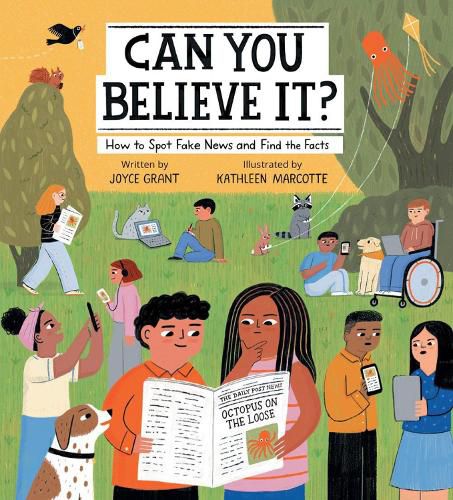Readings Newsletter
Become a Readings Member to make your shopping experience even easier.
Sign in or sign up for free!
You’re not far away from qualifying for FREE standard shipping within Australia
You’ve qualified for FREE standard shipping within Australia
The cart is loading…






Should we believe everything we read online? Definitely not! And this book will tell you why. This fascinating book explores in depth how real journalism is made, what fake news is and, most importantly, how to spot the difference.
It’s chock-full of practical advice, thought-provoking examples and tons of relevant information on subjects that range from bylines and credible sources to influencers and clickbait. It gives readers context they can use, such as how bias can creep into news reporting, why celebrity posts may not be truthful and why they should be suspicious of anything that makes them feel supersmart.
Young people get most of their information online. This must-read guide helps them decide which information they can trust - and which they can’t.
$9.00 standard shipping within Australia
FREE standard shipping within Australia for orders over $100.00
Express & International shipping calculated at checkout
Should we believe everything we read online? Definitely not! And this book will tell you why. This fascinating book explores in depth how real journalism is made, what fake news is and, most importantly, how to spot the difference.
It’s chock-full of practical advice, thought-provoking examples and tons of relevant information on subjects that range from bylines and credible sources to influencers and clickbait. It gives readers context they can use, such as how bias can creep into news reporting, why celebrity posts may not be truthful and why they should be suspicious of anything that makes them feel supersmart.
Young people get most of their information online. This must-read guide helps them decide which information they can trust - and which they can’t.
It’s more important than ever to be able to tell the difference between news and ‘fake news’. You’ll find examples of both in Can You Believe It?, a perfect guide for kids on how to spot when an article is designed to inform or manipulate.
This practical guide teaches readers how to track the source of the news article, how to tell if a source is reliable and legitimate, how to avoid clickbait, and all the little clues to look out for when reading. Are certain words highlighted? Is emotive language used? Does the headline make you feel very smart? If so, it could be fake news!
Can You Believe It? also encourages readers to question why an article was written. I especially appreciated how the book places importance on not sharing fake news, explaining the reasons (monetary, political, etc.) why people may write such content to begin with and how sharing those articles can help perpetuate and reward this behaviour. For ages 9+.